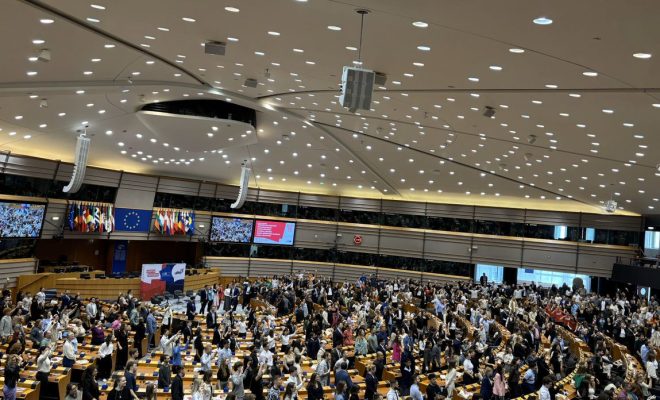The local impact of higher education: building sustainable cities and communities
In a world rapidly moving toward urbanization, with almost 7 out of 10 people globally projected to live in cities by 2050, a joint report by UNESCO IESALC and Times Higher Education spotlights the instrumental role universities play in nurturing sustainable urban development. Higher Education Institutions (HEIs) emerge as vital contributors to the UN Sustainable Development Goal 11 (SDG 11) in many different ways, for example through innovative research and relevant teaching on local and urban issues, the sharing of services and infrastructure between campuses and its surrounding communities, the preservation of cultural heritage, and policies addressing the impact of their student and staff populations on housing or transportation, among other areas.
The report includes:
- Global good practices: by exploring innovative strategies adopted by HEIs and governments worldwide, showcasing collaborative efforts towards sustainable urbanization.
- Quantitative insights: by uncovering quantitative data from 783 universities that reported on their SDG11 policies. The data, which allow for regional comparisons, observed 19 metrics across three areas: research, support of the arts and heritage, and sustainable practices.
- Case studies: by reviewing five compelling case studies from five world regions, highlighting effective practices that resonate across diverse global contexts.
- Recommendations for leaders: by providing actionable recommendations for higher education leaders and policymakers, emphasizing the crucial role universities play in building inclusive, resilient, and sustainable cities.
The main highlights of the report are as follows:
–On local partnerships and services to the community
University policies and initiatives intersect with governmental ones, revealing a reciprocal relationship where universities impact cities, while cities shape universities. Through partnerships with local governments, HEIs can provide capacity building to civil servants, support the design and implementation of policies through consultancy services or coordinate local public services with campus services in areas such as transportation, cultural activities, lifelong learning provision or access to open green spaces.
In partnership with governments and businesses, HEIs can also kickstart or participate in geographies of innovation, supporting local sustainable business, start-ups and spin-offs, transferring knowledge and building capacity.
–On urban planning and transportation
HEIs need to integrate seamlessly into the urban landscape, promoting open campuses with green and cultural spaces. This integration requires joint planning of urban and campus development. Globally, only around a quarter of institutions declared to work with local authorities on urban planning and development.
Campuses also need to be more accessible through sustainable transport. Across all world regions, around 60% of HEIs declared to take concrete actions to promote sustainable commuting, such as walking, cycling, and mass transit. However, only around half of them had quantitative targets on sustainable commuting.
–On housing
As student populations impact local demographics, student housing policies play a crucial role. Varied approaches, from student residences, to zoning policies, to scholarship schemes are implemented around the world. Around 70% of HEIs globally provided evidence of offering affordable housing to their students. However, this practice is much more common in Oceania (100% of HEIs), Europe and North America, and East and Southeast Asia (both over 80%), and less in Latin America and the Caribbean (below 50%).
–On cultural services and heritage preservation
Globally, around two thirds of participating universities had some form of contribution to the arts and heritage through performances and programmes, with over half of them providing specific evidence. Similarly, around 60% of them conduct activities to record and preserve cultural heritage, both tangible, such as traditional handcrafts and archeological findings, and intangible.
–On research and teaching on local issues
While HEIs have, by definition, a positive impact on the development of local human capital, HEIs should consider whether their research and educational services are specifically addressing local challenges and needs, as well as urban issues that can improve cities more generally. There is an increasing number of research initiatives and specialized programs addressing such issues, from natural disasters risk mitigation and climate change adaptation in cities to sustainable urban waste and water management, smart cities and sustainable urban planning, or affordable and sustainable housing and transportation policies and management strategies.
In conclusion, the report advocates for a holistic approach, calling for enhanced collaboration between HEIs, governments, the private sector and societal groups at the local level to better develop sustainable cities and communities. This report provides higher education leaders and policymakers with data-driven insights, real-life examples and actionable recommendations based on existing policies and practices around the world.
The report is now available in English and Spanish. Read it here:

RELATED ITEMS








